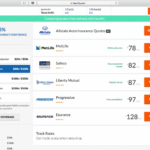United States insurance plays a vital role in the nation’s economy and the lives of its citizens. From safeguarding homes and businesses to providing financial security in times of need, the insurance industry has evolved significantly over the years, adapting to changing societal demands and technological advancements.
The US insurance market is a complex and diverse ecosystem, encompassing a wide range of products and services. This article delves into the history, key players, consumer trends, challenges, and future prospects of the US insurance industry, providing insights into its multifaceted nature and its impact on American society.
Overview of the US Insurance Market

The US insurance market is a vast and complex industry, playing a vital role in the nation’s economy and financial stability. Its roots trace back to the early days of the country, evolving over time to address changing societal needs and risks.
Historical Overview of the US Insurance Industry
The origins of insurance in the United States can be traced back to the colonial era. Early forms of insurance, such as marine insurance, were established to protect against the risks of maritime trade. As the country grew and industries developed, the need for various types of insurance expanded. The first life insurance company in the US, the Presbyterian Ministers’ Fund, was established in 1759. The 19th century saw the rise of fire insurance companies, followed by the emergence of casualty insurance to address risks related to accidents and liability.
Regulatory Bodies and Legislation
The insurance industry in the US is heavily regulated at both the federal and state levels. The National Association of Insurance Commissioners (NAIC) is a non-governmental organization that serves as a forum for state insurance regulators to coordinate and harmonize insurance regulations across the country. The federal government plays a role in regulating insurance through agencies like the Federal Insurance Office (FIO), which focuses on systemic risk within the insurance industry, and the Federal Trade Commission (FTC), which enforces consumer protection laws related to insurance practices. The Dodd-Frank Wall Street Reform and Consumer Protection Act of 2010 included provisions aimed at enhancing oversight of the insurance industry, particularly for large, systemically important insurers.
Size and Growth of the US Insurance Market
The US insurance market is one of the largest and most developed in the world. The total premiums written by US insurance companies reached over $1.3 trillion in 2021, according to the NAIC. The market continues to grow, driven by factors such as population growth, increasing wealth, and rising awareness of the importance of insurance.
Major Types of Insurance Products
The US insurance market offers a wide range of products designed to meet diverse needs and risks. Here are some of the major categories:
- Health Insurance: Covers medical expenses, including hospitalization, surgery, and doctor visits. It can be obtained through employers, government programs (Medicare and Medicaid), or individual purchase.
- Life Insurance: Provides financial protection to beneficiaries upon the death of the insured. Types of life insurance include term life, whole life, and universal life.
- Property Insurance: Protects against losses to real estate and personal property due to events such as fire, theft, and natural disasters.
- Casualty Insurance: Covers liability risks, such as accidents, negligence, and lawsuits. This category includes auto insurance, liability insurance, and workers’ compensation insurance.
- Other Types: The US insurance market also offers specialized products such as disability insurance, long-term care insurance, and travel insurance.
Key Players in the US Insurance Industry

The US insurance industry is a vast and complex landscape, with numerous companies competing for market share. Understanding the key players and their business models is crucial for comprehending the industry’s dynamics.
Major Insurance Companies
These companies are distinguished by their significant market share and influence in specific insurance segments.
- Berkshire Hathaway: Renowned for its diverse portfolio, including Geico (auto insurance), General Re (reinsurance), and several other insurance subsidiaries. Its focus on value investing and long-term growth has propelled its success.
- UnitedHealth Group: A leading healthcare and insurance conglomerate, UnitedHealth Group offers a wide range of health insurance plans through its subsidiaries, including UnitedHealthcare and Optum.
- Anthem: Another major player in the health insurance market, Anthem provides health insurance plans to individuals and employers through its Blue Cross Blue Shield plans.
- Cigna: Cigna offers a diverse range of insurance products, including health, life, and disability insurance, with a strong presence in both the individual and group markets.
- Progressive: Known for its innovative approach to auto insurance, Progressive offers online quotes and claims processing, as well as a range of telematics-based insurance products.
- Allstate: A prominent player in the personal lines insurance market, Allstate provides auto, home, and life insurance products through its direct sales channels and independent agents.
- State Farm: A mutual insurance company with a strong presence in the auto, home, and life insurance markets, State Farm is known for its focus on customer service and community involvement.
Business Model Comparisons
Insurance companies employ various business models to cater to different market segments and customer needs.
- Direct Writers: Companies like Geico and Progressive operate through direct sales channels, bypassing the use of agents. They rely heavily on advertising and online platforms to reach customers.
- Independent Agents: Companies like Allstate and State Farm leverage a network of independent agents to sell their products. Agents act as intermediaries, providing personalized service and advice to customers.
- Captive Agents: Companies like MetLife and Prudential employ captive agents who exclusively sell their products. These agents receive training and support from the company, ensuring consistency in product offerings and sales practices.
- Brokers: Brokers act as intermediaries between insurance companies and customers, helping customers find the most suitable insurance products from various companies. They receive commissions from the companies whose products they sell.
Competitive Landscape
The US insurance industry is highly competitive, with companies vying for market share in various segments.
- Price Competition: Companies often compete on price, offering discounts and promotions to attract customers. This can lead to a race to the bottom, where companies may compromise on coverage or service quality to offer lower premiums.
- Product Innovation: Companies are constantly innovating to develop new products and services that meet evolving customer needs. This includes telematics-based insurance, digital health platforms, and personalized insurance packages.
- Customer Experience: Companies are increasingly focusing on improving the customer experience, offering online platforms, mobile apps, and personalized customer service. This is crucial for retaining customers in a competitive market.
Role of Brokers and Agents
Brokers and agents play a vital role in the US insurance market, connecting customers with insurance companies and providing valuable services.
- Expert Advice: Brokers and agents possess extensive knowledge of the insurance market and can help customers find the most suitable insurance products based on their individual needs and circumstances.
- Personalized Service: Brokers and agents provide personalized service, guiding customers through the insurance process and answering any questions they may have.
- Claims Assistance: Brokers and agents can assist customers with filing claims and navigating the claims process, ensuring they receive the appropriate compensation.
Consumer Trends and Behaviors in US Insurance
The US insurance market is dynamic and constantly evolving, driven by changing consumer preferences, technological advancements, and emerging trends. Understanding these trends is crucial for insurers to remain competitive and cater to the evolving needs of their customer base.
Impact of Technology on Consumer Insurance Choices
Technology has profoundly impacted consumer insurance choices, leading to increased transparency, personalized experiences, and greater control over their policies. Consumers are increasingly using online platforms and mobile apps to compare insurance quotes, purchase policies, and manage their coverage.
- Online Comparison Platforms: Websites like Policygenius, Insurify, and NerdWallet allow consumers to compare quotes from multiple insurers simultaneously, empowering them to find the best deals.
- Mobile Apps: Insurance apps provide convenient access to policy information, claims reporting, and customer support, enhancing the overall customer experience.
- Data Analytics and Personalization: Insurers use data analytics to personalize insurance offerings based on individual risk profiles and preferences, leading to more tailored and competitive policies.
Emerging Trends in Consumer Demand for Insurance Products
Consumer demand for insurance products is shifting, reflecting evolving lifestyles, concerns, and priorities.
- Focus on Value and Transparency: Consumers are demanding more value for their insurance premiums, seeking clear and transparent pricing structures and policy terms.
- Growing Interest in Specialty Products: There is an increasing demand for niche insurance products, such as pet insurance, cyber security insurance, and identity theft protection.
- Sustainability and Environmental Concerns: Consumers are increasingly interested in insurance products that align with their environmental values, such as green insurance policies and renewable energy coverage.
Challenges and Opportunities in the US Insurance Industry
The US insurance industry faces a complex landscape, navigating both significant challenges and exciting opportunities. While rising healthcare costs, climate change, and cyber security threats present formidable obstacles, technological advancements and evolving consumer needs offer avenues for growth and innovation.
Impact of Emerging Technologies on the Insurance Industry
Emerging technologies like artificial intelligence (AI) and blockchain are reshaping the insurance landscape, creating new opportunities and transforming traditional practices.
AI is being integrated into various aspects of the insurance industry, from risk assessment and fraud detection to customer service and claims processing. AI-powered chatbots can provide instant customer support, while machine learning algorithms can analyze vast datasets to identify potential risks and personalize insurance policies.
Blockchain technology, known for its decentralized and secure nature, holds the potential to revolutionize insurance operations. Blockchain can streamline claims processing, improve transparency, and reduce fraud. Smart contracts, enabled by blockchain, can automate insurance processes, reducing manual intervention and operational costs.
New Insurance Products and Services to Address Evolving Consumer Needs, United states insurance
The insurance industry is responding to evolving consumer needs by developing new products and services that address emerging risks and offer greater flexibility.
The growing awareness of climate change has led to the development of new insurance products that cover risks associated with extreme weather events. These products can provide financial protection against damage caused by floods, hurricanes, and wildfires.
The rise of the gig economy has also created a demand for new insurance products tailored to independent contractors and freelancers. These products offer coverage for liability, income protection, and other risks specific to the gig economy.
Rising Healthcare Costs
Rising healthcare costs pose a significant challenge to the US insurance industry, particularly for health insurance providers. As healthcare expenses continue to escalate, insurers face pressure to manage costs while maintaining adequate coverage for policyholders.
To address this challenge, insurers are exploring various strategies, including:
- Promoting preventive care and wellness programs: By encouraging healthy lifestyles and early detection of health issues, insurers can reduce the incidence of costly chronic conditions.
- Negotiating lower prices with healthcare providers: Insurers are leveraging their bargaining power to secure better rates from hospitals, doctors, and other healthcare providers.
- Developing innovative healthcare delivery models: Insurers are experimenting with new models of healthcare delivery, such as telehealth and virtual care, which can potentially lower costs while improving access to care.
Climate Change
Climate change presents a significant challenge to the insurance industry, increasing the frequency and severity of extreme weather events. This results in higher claims costs and potential financial instability for insurers.
Insurers are responding to this challenge by:
- Adjusting risk assessments and pricing: Insurers are incorporating climate change data into their risk assessments and adjusting premiums to reflect the increased risk of extreme weather events.
- Developing new products and services: Insurers are developing new products and services that specifically address the risks associated with climate change, such as flood insurance and climate-resilient building codes.
- Investing in climate change mitigation and adaptation: Insurers are actively engaging in efforts to mitigate climate change and adapt to its impacts, such as investing in renewable energy and promoting sustainable practices.
Cybersecurity Threats
Cybersecurity threats pose a growing challenge to the insurance industry, as insurers become increasingly reliant on technology and digital data. Cyberattacks can disrupt operations, compromise sensitive customer information, and lead to significant financial losses.
To address this challenge, insurers are:
- Strengthening cybersecurity measures: Insurers are investing in advanced cybersecurity technologies and implementing rigorous security protocols to protect their systems and data.
- Developing cyber insurance products: Insurers are offering cyber insurance policies that provide financial protection against losses caused by cyberattacks.
- Collaborating with cybersecurity experts: Insurers are working with cybersecurity experts to stay ahead of evolving threats and develop effective mitigation strategies.
The Future of US Insurance
The US insurance industry is at a crossroads, poised for significant transformation driven by technological advancements, evolving consumer preferences, and the growing imperative for sustainability. The future holds both challenges and opportunities for insurers, demanding adaptability, innovation, and a commitment to serving evolving customer needs.
Key Trends Shaping the Future of US Insurance
The future of the US insurance industry will be shaped by a confluence of trends that will impact how insurers operate, how consumers interact with insurance, and the very nature of insurance products and services.
| Trend | Impact | Potential Outcomes |
|---|---|---|
| Increased Adoption of Digital Technologies | Enhanced customer experience, streamlined operations, improved risk assessment, and personalized insurance solutions. | Greater customer satisfaction, lower operational costs, and the development of innovative insurance products. |
| Growing Importance of Data Analytics | More accurate risk assessment, personalized pricing, and proactive risk management. | Improved underwriting decisions, reduced fraud, and more efficient claims processing. |
| Rise of Insurtech Companies | Competition and innovation, driving the development of new products and services. | Increased customer choice, more affordable and accessible insurance, and potential disruption to traditional insurance models. |
| Shifting Consumer Preferences | Demand for personalized, digital-first experiences, and greater transparency and value for money. | Increased focus on customer-centricity, development of personalized insurance packages, and greater emphasis on digital channels. |
| Focus on Sustainability and Social Responsibility | Pressure on insurers to address environmental and social issues, and integrate sustainability considerations into their operations. | Development of sustainable insurance products, investment in green technologies, and greater social impact initiatives. |
Impact of Technological Advancements on the Insurance Sector
Technological advancements will revolutionize the US insurance industry, impacting all aspects of the value chain, from underwriting to claims processing. Artificial intelligence (AI) will play a pivotal role in automating tasks, improving risk assessment, and personalizing insurance products. Machine learning algorithms will enable insurers to analyze vast amounts of data, identify patterns, and predict future risks. Blockchain technology will enhance security, transparency, and efficiency in claims processing and fraud detection. The adoption of these technologies will lead to a more efficient, personalized, and customer-centric insurance landscape.
Role of Sustainability and Social Responsibility in the Future of Insurance
Sustainability and social responsibility are becoming increasingly important for consumers and businesses alike. Insurers are under growing pressure to address environmental and social issues, and integrate sustainability considerations into their operations. This includes developing sustainable insurance products, investing in green technologies, and supporting social impact initiatives. By embracing sustainability and social responsibility, insurers can enhance their reputation, attract environmentally conscious customers, and contribute to a more sustainable future.
“The US insurance industry is on the cusp of a significant transformation, driven by technological advancements, changing consumer expectations, and the growing importance of sustainability. Insurers that embrace innovation, prioritize customer experience, and commit to social responsibility will be best positioned to thrive in the future.” – [Source: Industry Report/Expert Opinion]
Final Summary: United States Insurance

As the US insurance industry continues to evolve, it faces both challenges and opportunities. The need to adapt to changing consumer preferences, technological advancements, and evolving societal needs will be paramount. By embracing innovation, fostering collaboration, and prioritizing consumer well-being, the industry can navigate the future with resilience and success.
Query Resolution
What are the different types of insurance available in the US?
The US insurance market offers a wide range of insurance products, including health insurance, life insurance, property insurance, casualty insurance, and more. Each type of insurance addresses specific risks and provides financial protection against potential losses.
How can I find the best insurance policy for my needs?
Comparing quotes from multiple insurance companies, understanding your individual needs and risk profile, and consulting with an insurance broker or agent can help you find the most suitable policy.
What are the benefits of having insurance?
Insurance provides financial protection against unexpected events, such as accidents, illnesses, natural disasters, and other unforeseen circumstances, helping individuals and businesses mitigate potential losses and maintain financial stability.







